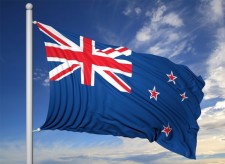Kiwi Soars to One-Year High as it Ignores Central Bank Cuts
 New Zealand’s dollar surged to the highest since May 2015 after traders deemed the central bank’s decision to cut borrowing costs was insufficiently dovish amid the global ardour for yield spurred by unprecedented global monetary easing.
New Zealand’s dollar surged to the highest since May 2015 after traders deemed the central bank’s decision to cut borrowing costs was insufficiently dovish amid the global ardour for yield spurred by unprecedented global monetary easing.
The kiwi climbed against all of its 16 major counterparts after the Reserve Bank of New Zealand cut its official rate to a record, aping the reaction of its Australian counterpart when officials there lowered borrowing costs earlier this month.
Some investors had been looking for a more aggressive easing signal from the central bank, which indicated it would cut rates at least once more to boost weak inflation. The US dollar advanced against the euro after last week’s better-than-expected jobs data bolstered a view that the Federal Reserve is among few central banks in developed economies whose next policy move will be to tighten.
“The kiwi surged because some in the market were looking for a very aggressive easing from the RBNZ,” said Ned Rumpeltin, the European head of foreign exchange strategy at Toronto Dominion in London.
Cash rate lowered
The RBNZ lowered its official cash rate by a quarter point to 2 percent and published bank-bill forecasts indicating just one more reduction was in the pipeline. All sixteen economists surveyed by news agency Bloomberg had expected the RBNZ to reduce by a quarter point. The futures market indicated on Wednesday (August 10) that traders were certain of a reduction and even saw 20 percent odds for a 50 basis-point drop.
The RBNZ and the Reserve Bank of Australia prefer weaker currencies to stoke inflation back into their respective target bands. Two rate reductions by the Australian central bank since May and six by its antipodean neighbor in the past 14 months haven’t weakened exchange rates as their benchmark borrowing costs remain well above those of their peers, attracting foreign investment.
The kiwi climbed 0.6 percent to 72.49 U.S. cents as of 07.44am (August 10) in New York, having jumped as much as 1.9 percent to 73.41 — the highest since May 2015 — after the RBNZ announcement. The Australian dollar rose 0.1 percent to 77.14 cents and is at levels not seen since before the May rate reduction.
» Register with Plus500 now and start trading in currencies online today.





